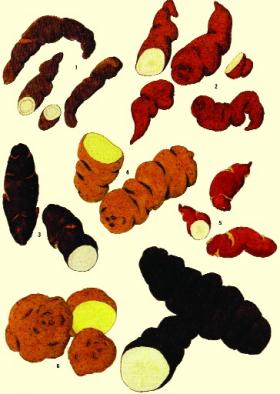The first potatoes
Published in Features, Issue 4 (Jul/Aug 2008), Pre-history / Archaeology, Volume 16
Various species of Solanum tuberosum that originally grew wild in Central and South America. (Franz Frey)
So unpalatable and poisonous is the original potato that anthropologists continue to puzzle over why anyone considered it a possible food in the first place. But over 8,000 years ago someone began experimenting with this unfriendly tuber (the potato is not a root at all but a tuber, a swollen underground stem). While various species of Solanum tuberosum grow wild in Central and North America, it was only high in the Andes that the tuber was cultivated. Over 2,000 years before the Spanish conquest, the mountain-dwellers of modern-day Peru tamed the bitter plant, probably not so much because they were keen gardeners as because little else offered itself as food in the bleak Andean range—an unforgiving landscape of extreme variations in altitude, climate, soil and rainfall. Maize cannot grow above 12,000 feet. But where maize and other cereals fail, the potato can thrive. In fact, it is precisely the cruel environment that makes the potato so hearty and wholesome. The long dry season of the Andean antiplano can sustain only those plants capable of stashing away nutrients. The tuber we dig up and eat is actually the plant’s secret storehouse of energy, drip-feeding it through the drought. So while maize dominated the life of the American plains and valleys, the potato became king of the mountain. And it allowed another life-form to cling to this comfortless landscape 15,000 feet above sea level—the Quechua Indians.
















